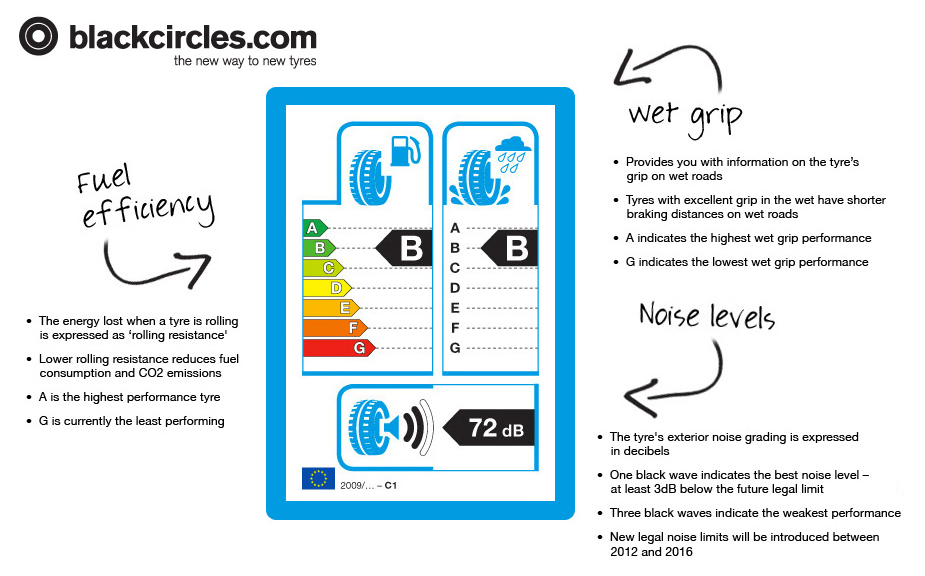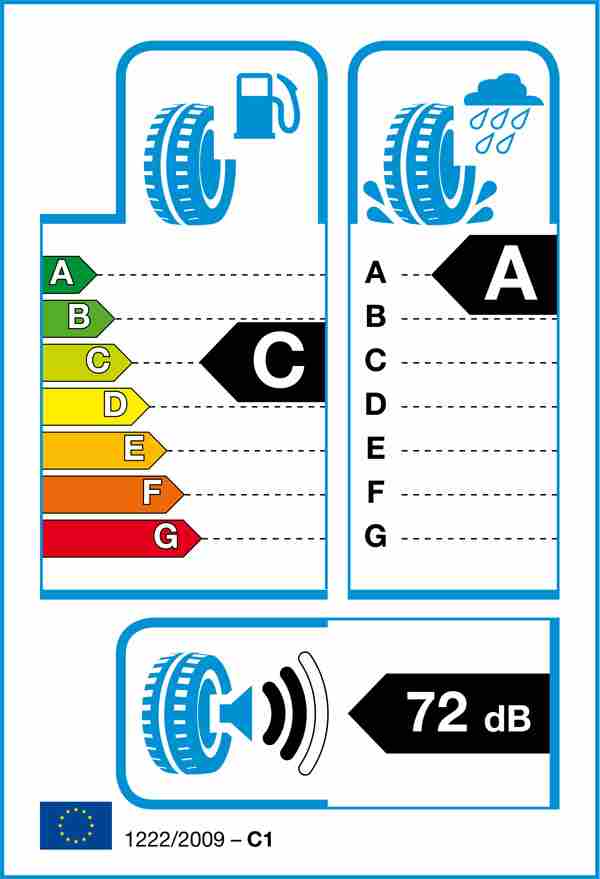What is the efficiency of a tyre? A tyre’s EU tyre label wet grip rating reflects the capacity of the tyre to brake on a wet road. The tyre label testing is self-certified using specific EU standardised methods that every test must follow. Many tyre manufacturers now offer models specifically designed to minimise rolling resistance to boost efficiency.
The rating is based on wet braking in a straight line. The difference between best and worst can be as much as 7. Reducing rolling resistance too far can increase braking distances, particularly in. A is the most fuel efficient and G is the least efficient. So if you do a lot of driving and fuel efficiency is important to you, then look for tyres rated A, B or C. To put this in real terms, choosing A-rated tyres instead of G-rated tyres could save you more than litres of fuel every 0kilometres.
It classifies the tyre into three categories – fuel efficiency, wet grip and external noise – with a rating for each area. And external noise is measured in decibels (dB). The label itself looks very similar to the one that household appliances have. The tyre fuel efficiency rating is a measure of how much rolling resistance the tyre produces.
Just as a ball won’t bounce as high on the second bounce, tyres lose energy as they travel along the road. Assuming an even scale there could be a difference of 2. That works out as a £28. Individually it is £ 7. It uses a coloured scale: a black arrow with a large white letter points to the rating for the tyre. Tyres have a fuel efficiency rating from A (most fuel-efficient) to G (least fuel efficient).
Tyres with the best fuel economy have a green ‘A’ rating. The better the fuel efficiency, the lower the cost of motoring and the less harmful Carbon Dioxide pumped into the atmosphere. Choosing A-rated tyres over G-rated tyres equates to a 7. The purpose of the legislation is to ensure that every car, van or truck tyre carries a label displaying its performance in three key areas Fuel Efficiency, Wet Grip Rating and Noise Emission Rating.
Rolling resistance is the main key factor in measuring the energy efficiency of a tyre and has direct influence on the fuel consumption of a vehicle. The energy efficiency class ranges from A (most efficient) to G (least efficient).
A top class tyre has less rolling resistance and therefore requires less energy to move the vehicle. This translates into lower energy costs (fossil fuels or electricity). Tyre Fuel Efficiency Calculator.
Makers were asked to nominate a tyre from their range with no restrictions on weight or speed ratings. This rating establishes how economical the tyres are in terms of fuel consumption and it takes the rolling resistance of the tyre into consideration.
From this, the tyre fuel efficiency rating is calculated. Online tyre retailer selling car tyres, 4xtyres and van tyres at wholesale prices. Tyres delivered to your door, fitted at your convenience.

With a fast and friendly service. All tyre sizes for all vehicles delivered throughout the UK.

Therefore the difference between the stopping distance of an A-rated tyre and a G-rated one could be metres. If a tyre has a good fuel efficiency rating, then its wet grip score may be poor.
Fuel efficiency rating Rolling resistance is used to measure how fuel efficient a tyre is. The less resistant a tyre is the less fuel it will use to move the vehicle. Tyres will be ranked in one of seven fuel efficiency categories on the new labels. Category G is the least fuel efficient.
It is the lower rolling resistance which gives energy saving tyres all of their numerous advantages. When firm braking the tyre is very efficient at slowing the car, however as the tyre has a hard compound the tyre will slip under high braking. The wet handling characteristics of the tyre is very good and the tyre can disperse the water effectively.

The harder rubber compound does, however, mean that in low temperatures the wet handling is lost slightly, but not.
No comments:
Post a Comment
Note: only a member of this blog may post a comment.